
The gravitational motion of tennis pulls towards solitude. Loneliness. Isolation. Distance. These are the attributes that accompany the journey taken by our sport’s driven competitors. When studies explain why people leave tennis, a frequent reason is downright melancholy: I couldn’t find anyone to play with me.
Dennis Van der Meer (1933-2019), Vic Braden (1929-2014) and Pancho Segura (1921-2017) counterattacked solitude with glee, insight and generosity. If you didn’t laugh or learn something within 15 minutes of meeting any one of these instructors, you had no sense of humor, and zero likelihood of becoming a tennis player.
When a facility seeks a new tennis director who can whip up enthusiasm, the Van der Meer legacy is vivid. When a student laughs while attempting to improve a stroke, hark back to Braden. When a player recognizes how best to play the 15–30 point, and how that differs from 40–15, tip the hat to Segura. The tennis boom of the 1970s propelled each instructor into the limelight, and their impacts are still being felt today.
Namibia, Africa; Monroe, Michigan; Guayaquil, Ecuador. The places where Van der Meer, Braden and Segura respectively grew up were light years removed from anything notable in tennis. Van der Meer, the child of missionaries, was shown the game by his mother with a rope and a stick. Braden, caught stealing tennis balls at a local facility, was told by the man who apprehended him that he could either go to jail or learn tennis. Segura’s father was the caretaker of a local tennis club. For each, life was tennis or bust.
When Van der Meer learned that he wasn’t quite good enough to make the South African Davis Cup team, he decided to dedicate himself to instruction. Braden was ranked as high as No. 25 in the U.S. in the 18s, but soon came to love teaching. Segura went to the top as a player, but he would leave his greatest mark as a coach.
この記事は Tennis の November/December 2019 版に掲載されています。
7 日間の Magzter GOLD 無料トライアルを開始して、何千もの厳選されたプレミアム ストーリー、9,000 以上の雑誌や新聞にアクセスしてください。
すでに購読者です ? サインイン
この記事は Tennis の November/December 2019 版に掲載されています。
7 日間の Magzter GOLD 無料トライアルを開始して、何千もの厳選されたプレミアム ストーリー、9,000 以上の雑誌や新聞にアクセスしてください。
すでに購読者です? サインイン
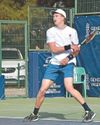
The Tennis Conversation: Jenson Brooksby, a piano man
Billy Joel may be a New York City icon, but the fans in Queens should start getting to know this piano man

The Five-Step Sit-Down Plan
Don’t neglect the value of a smart changeover routine

MAKING THE TURN
Six years after saying goodbye to the protour grind, Mardy Fish may be more active than ever—on the court, on the course, and helping combat a struggle anyone can encounter
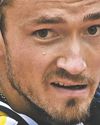
FOOD FOR THOUGHT
Queens is known for its gastronomy as much as its tennis. Daniil Medvedev, equal parts sugar and spice, hopes to add a unique flavor to the borough as he vies for his first major
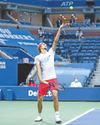
SUMMER IN THE CITIES
Broadway may not re-open until mid September, but tennis offers its own brand of live theatre in the preceding months
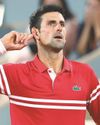
REOPEN SEASON
The pandemic halted tennis as an up-close experience— but is now giving way to pandemonium among crowds. As the pro game reopens this summer and fans gather again, we’re realizing what we’ve been missing for so long
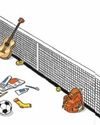
Court of Appeals
Resolving Your Rules Questions&Quarrels
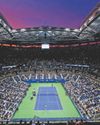
An Open Mind: New York's Slam has no shortage of history, but it always evolves
In the last decade, Arthur Ashe Stadium got a roof, and a new Grandstand and Louis Armstrong Stadium debuted.

Those Fall Feels
The end of summer may be bittersweet, but getting lost amid the backroads of NEW ENGLAND adds a silver—and golden—lining to the season change. Pack a few sweaters along with your tennis kit and prepare for leaf-peeping, scenic drives and delicious autumnal ingredients to pair with your forehands
Court of Appeals
Resolving Your Rules Questions & Quarrels